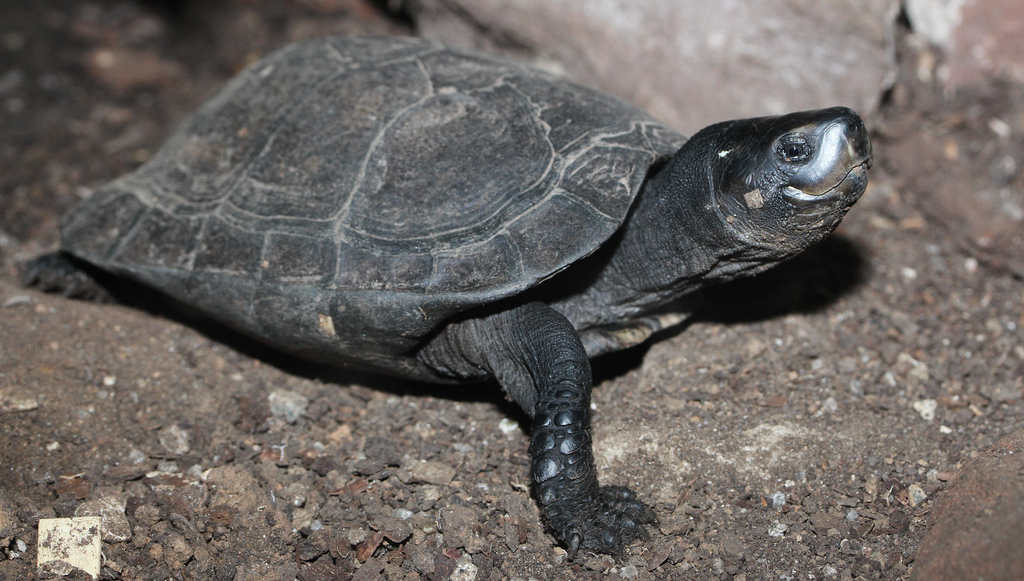Black marsh turtle
(Siebenrockiella crassicollis)

Description
Adult black marsh turtles are usually small to medium-sized,averaging at around 17 cm (6.7 in) in length and rarely exceeding 20 cm (7.9 in).Some individuals,however,are known to grow to twice this size.The ovoid carapace (the dorsal shell) is widest just behind the middle portion,with a strongly serrated posterior margin.A prominent central ridge (known as keels) also runs through the middle of the carapace.Two lateral keels are present as well,though they are not always visible.The carapace is almost entirely black or dark brown with black radiating patterns.he plastron (the ventral shell) is not hinged and has a shallow U-shaped notch in the pair of anal scutes.The bridge (the parts connecting the abdominal and pectoral scutes of the plastron to the carapace) is approximately the same length as the rear part of the plastron (consisting of the femoral and anal scutes).Both the bridge and the plastron can be entirely black,dark brown,or yellowish with splotches or patterns of darker colors.The forelimbs are covered with large transverse scales.Both the forelimbs and the hind limbs are webbed,reflecting their largely aquatic habits.The necks of black marsh turtles are characteristically thick,forming a collar around the head when it is retracted into the shell.All of the limbs,the tail,and the neck are dark gray to black.The head is broad with a short upwardly pointed snout.It is mostly black on top with cream to yellow markings around the eyes and at the throat.It also has a pair of pale white to yellow spots just behind the tympanum,usually hidden behind the folds of the neck.The powerful jaws are pale yellow to pale brown in color and curves upwards,earning it the charming name of 'smiling terrapin'.Black marsh turtles are sexually dimorphic.Males have concave plastra in contrast to the flat plastra of females.The markings around the eyes and throat,present in all juveniles,disappear among males upon reaching adulthood while they are retained in females.The tails are also longer and thicker for males than for females.
Taxonomic tree:







